The Mystery of the Rolex GMT Master II 16710-3186
By: John B. Holbrook, II
June12th, 2008
In recent months, I've been seeing reports online regarding some interesting variations on the GMT Master II 16710 (for more information on the GMT Master II, click HERE) which have been showing up at dealers, in the last remaining number of models which exist. For those not aware, Rolex officially confirmed at the 2007 Basel fair that production was ending on the 16710, as it was being replaced by the 1167X line of ceramic bezel GMT Master II watches (click HERE for additional information). Specifically, these final watches at the end of the production run for the 16710 not only exhibited a dial font variation (specifically in the "II" where "GMT Master II" was printed on the dial, but also had a surprise in the movement used in these watches. Last week my Rolex authorized dealer called me and told me about an interesting GMT Master II which they'd just gotten in, and that their Rolex rep actually wanted to buy the watch for himself, saying that very few had been produced. The dealer told the Rolex Rep they had a customer they knew who would want the watch, and immediately called me. Here's a few photos of the watch, which is an M serial and according to Rolex is the last production serial for the 16710 GMT Master II:
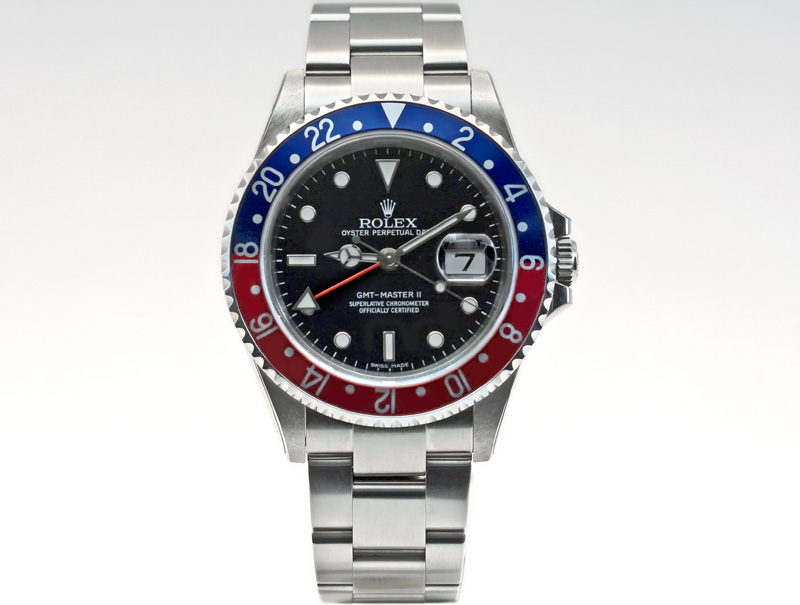
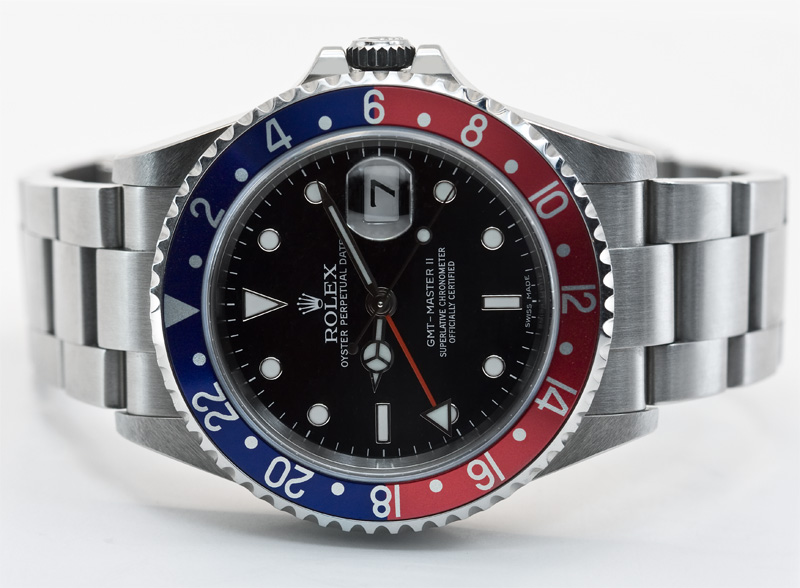
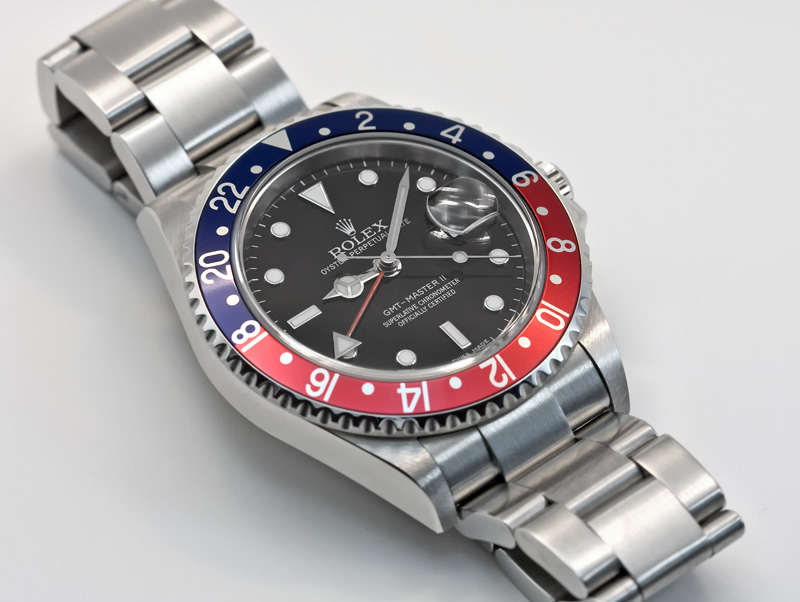
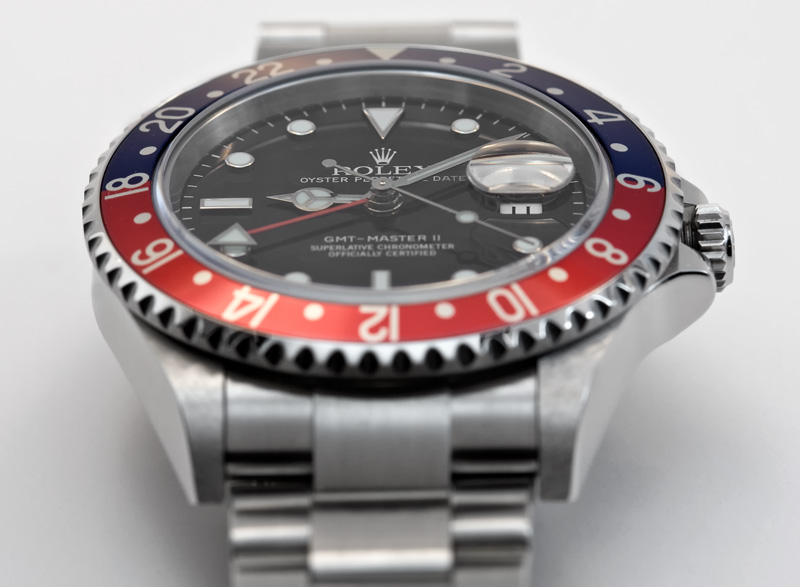
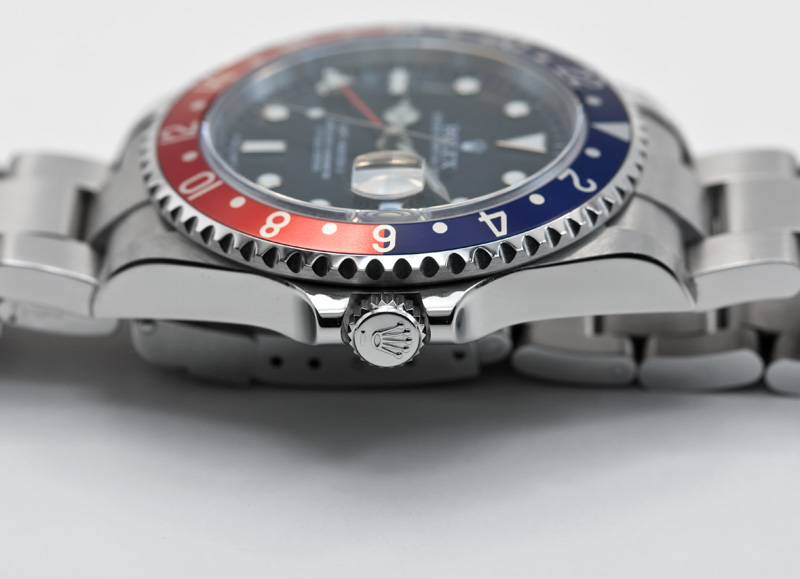
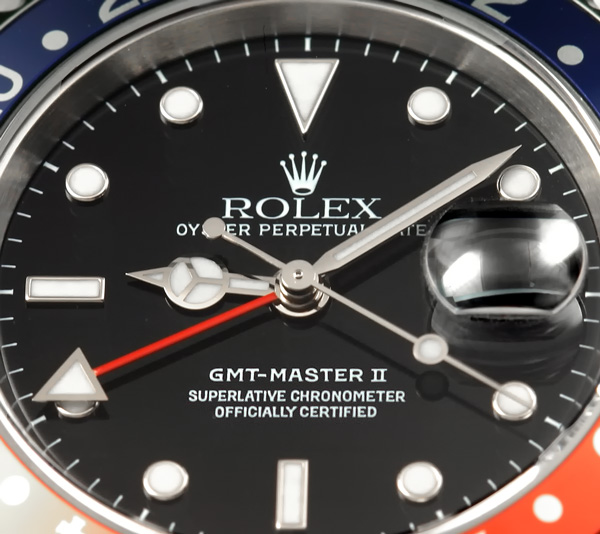
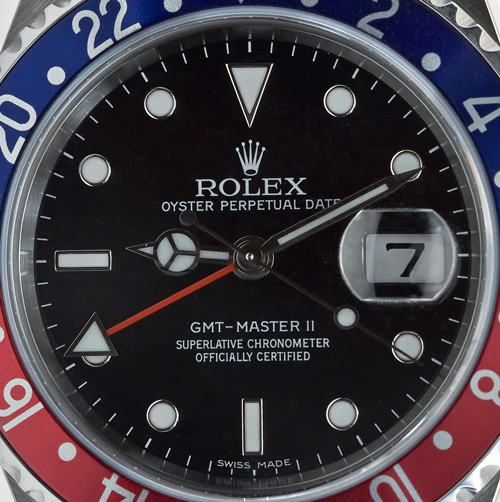
The small but significant dial font variation is not the only different between this watch and a standard 16710 GMT Master II of the past. Opening the watch case, I would expect to find the venerable Rolex caliber 3185 which has been used in the 16710 for roughly two decades. Instead, here are some photos showing the movement I found in this GMT Master II:
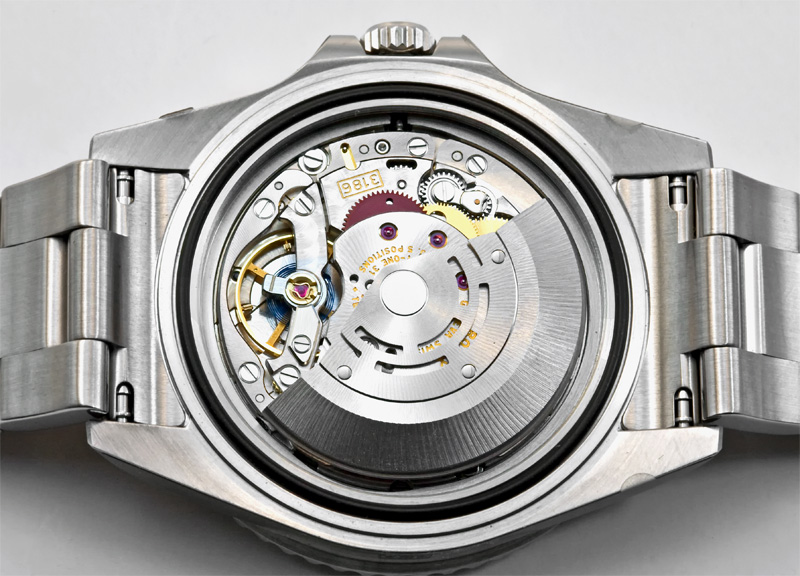
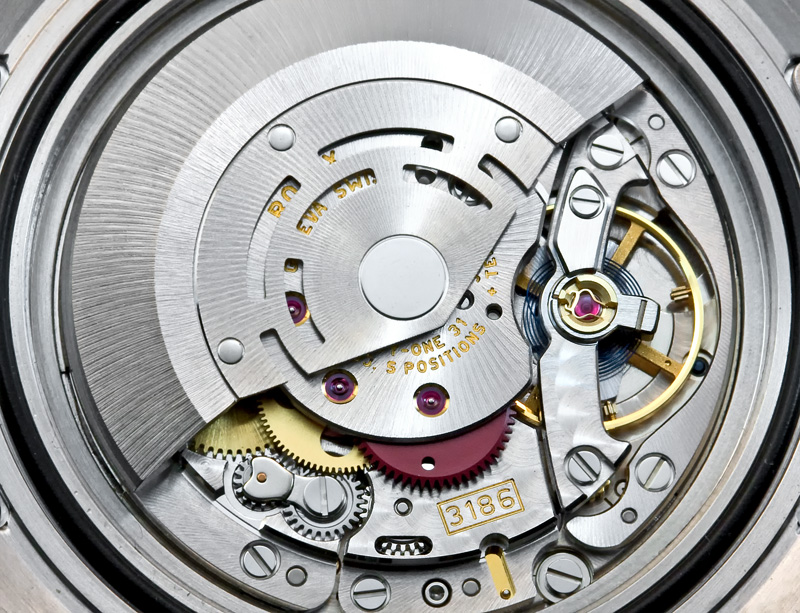
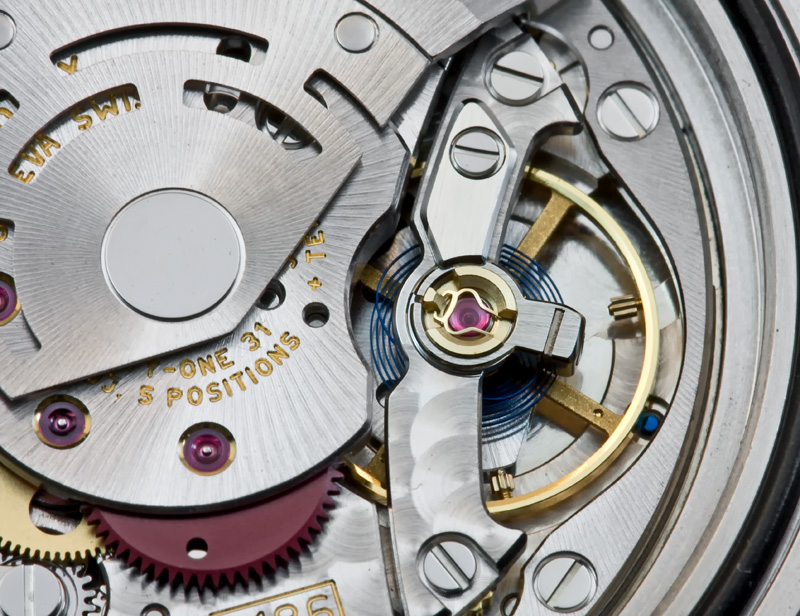
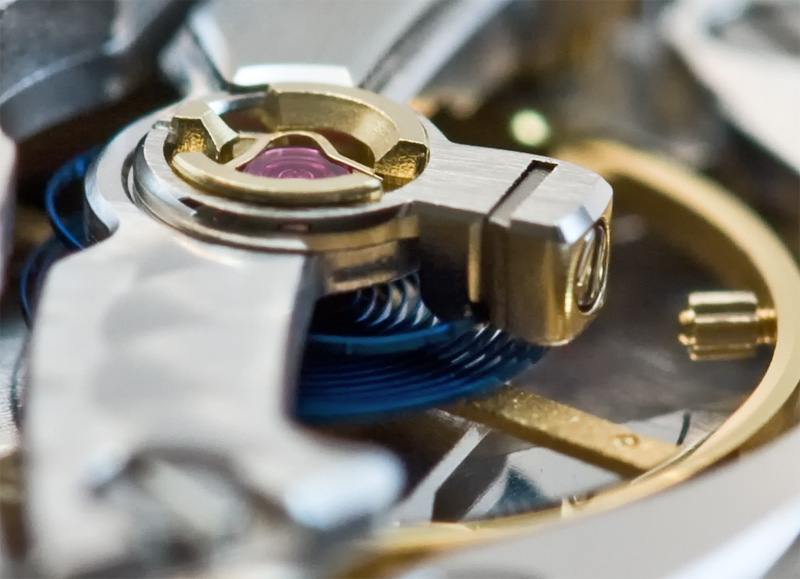
Are these watches "errors" from the Rolex factory? I don't believe they are. Rumors in the online community have persisted that these models which left the Rolex factory had a dial misprint and were mistakenly fitted with the caliber 3186 inside. I do not believe this to be the case. The first point of evidence which would seem to dispel the myth that the 3186 equipped 16710 GMT Master II's represent a factory error is the fact that examples of the Explorer II from roughly the same production period also have the caliber 3186 inside. Note that the Explorer II has not, as of yet, been discontinued though it is expected that Rolex will soon announce a replacement for the current Explorer II in much the same fashion as the GMT Master II. I spoke to some contacts I have at Rolex USA as well as some service technicians that I know who work at Rolex Authorized dealers on this point, and confirmed that the 3186 inside the 16710 GMT's was no accident, however they had no idea that Geneva had shipped these 16710 examples with the 3186 inside. Initial indications are that the lion's share of these models went to the USA, with some know examples showing up in HK.
If the 16710B doesn't represent a production error from Rolex, what happened? Certainly these aren't errors from the Rolex factory, and I wouldn't call these variant models "transitional models" such as we've seen with the Submariners from the late 1980's. My unconfirmed theory is that Rolex pulled the caliber 3185 out of production, once the 3186 came along (any surplus movements and parts have likely has been "mothballed" in order to service and maintain the large global population of caliber 3185 equipped watches which exist). Rolex probably had more bezels and cases left over than available 3185 movements, and decided to put the caliber 3186 inside them and sell them until the cases and bezels ran out.
Is the presence of "sticks" instead of "Romans" on the dial a guarantee of the watch having a caliber 3186 inside? Unfortunately, no. The way Rolex does things just doesn't make it easy for collectors. Examples of the stick dial GMT Master IIs have been reported as far back as the Y series of production - roughly five years ago, and well before the 3186 went into production. Since there are examples of both stick and Roman dials from the Y series, I believe that to be the production series in which Rolex began phasing in the stick dial GMTs. It would appear that the only reliable way to confirm the presence of a caliber 3186 in a 16710 is to open the case and visually inspect the movement. Early reports suggest the 16710B began toward the end of the Z production, and continue through the end of the M production serial.
The model/style number on the newer warranty certificates has an alpha code next the model number. Doesn't that confirm that the watch has a 3186 inside? I initially thought the answer to this question was yes. Take a look at the below scan of the new "credit card" style warranty and chronometer certificate I received with this watch. Note the "Style number" is expressed 16710B.
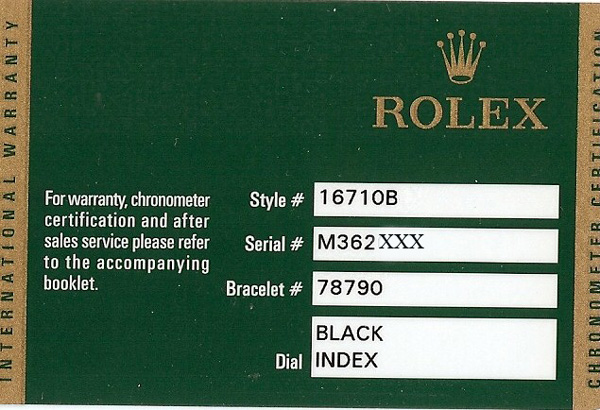
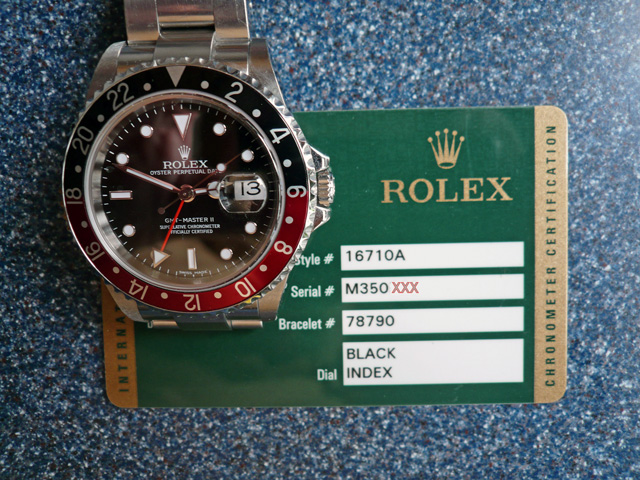
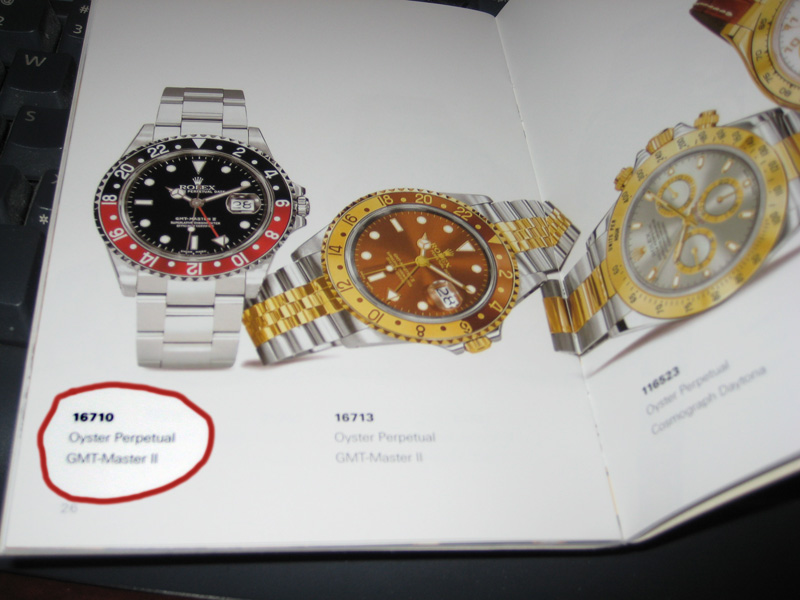
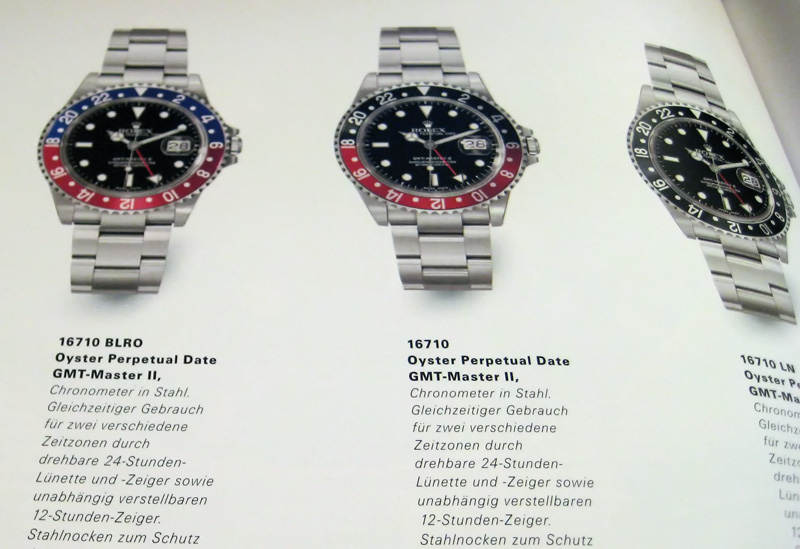
Are the 16710-3186 GMTs "rare collectibles" with potential for price appreciation? Magic 8 ball says yes. History will be the ultimate decision maker here, but one can speculate how many exist. Rolex doesn't publish production figures, but the COSC institute does publish how many COSC certificates it issues for Rolex - usually around 600,000 per year, give or take. The 16710-3186 production seems to have run from about the end of the Z production, through the end of the next production series, M (or until Rolex ran out of cases and bezels at some point during M production). I'd guess 16710-3186 production represents no more than between 2% to perhaps as much as 5% of the total production during this period (let's say 700,000). So I'm guessing that no more than 35,000 examples of the 16710-3186 exist globally, and quite likely far less. That's an extremely small production run by modern Rolex standards. And Rolex isn't making any more of them. Whatever the exact number, you can be sure there are far fewer 16710-3186 GMTs out there than stainless Daytonas. And we all know how collectible they are.
